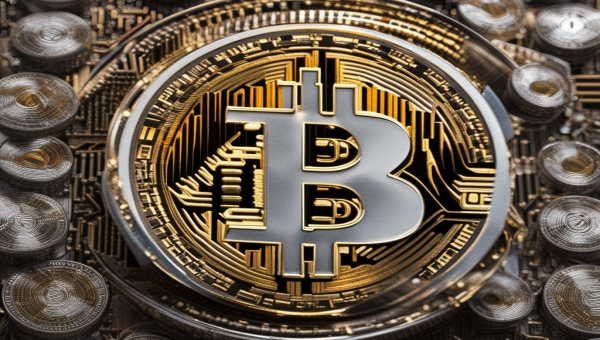Table of Contents:
Introduction: Understanding the Phenomenon of Bitcoin's Halving
The magical realm of cryptocurrencies might seem complex to some at first sight, particularly due to its exclusive lingo and concepts. A frequently discussed topic in this world is the phenomenon known as "Bitcoin Halving." This occurrence, however, does not allude to a reduction of Bitcoin's size or value. It corresponds to a pre-programmed event, halving the reward for miners who maintain the network's integrity and perform bitcoin transactions.
Bitcoin's Halving echoes Bitcoin's decentralized nature and its dedication to fixed supply principles, setting it apart from traditional financial systems that are subject to governmental control and inflationary policies. The impacts of this event on the price behavior of Bitcoin can be significant, and gaining an understanding of it can be beneficial for investors, traders, and anyone interested in the cryptocurrency market.
With the aim of simplifying this complex situation for our readers, we will dive deeply into the topic, discussing Bitcoin's Halving and shedding light upon its impact on Bitcoin's price.
Decoding Bitcoin Halving: What Exactly Is It?
The Implications of Bitcoin Halving
| Pros | Cons |
|---|---|
| Reduces inflation rate | Increased transaction fees |
| Can lead to price increase | May deter miners due to reduced rewards |
| Increases scarcity and demand | Risks of short-term price volatility |
Decoding Bitcoin Halving: What Exactly Is It?

In simple terms, Bitcoin Halving refers to the reduction by half of the rewards that Bitcoin miners receive for processing transactions. This event takes place approximately every four years, or more precisely, after every 210,000 blocks of transactions have been mined. Given Bitcoin's inception in 2009, this event has already taken place three times, the most recent one in May 2020.
Established by Bitcoin's elusive creator, Satoshi Nakamoto, this practice is ingrained in Bitcoin's code to ensure that the total supply of Bitcoins will not exceed 21 million. This built-in scarcity is designed to emulate valuable resources such as gold, reinforcing the perception of Bitcoin as 'digital gold'.
The Impact of Halving on Bitcoin's Price
So, you might wonder, how does this technical event affect the price of Bitcoin? In theory, the answer lies in the simple economics of supply and demand. When the reward for mining is halved, fewer new Bitcoins are created and released into circulation. Meanwhile, if demand remains constant or increases, the reduced supply can drive the price up.
If we look at history, in the year following each previous halving, Bitcoin has experienced a significant increase in value. However, it is crucial to remember that correlation does not necessarily mean causation. Other factors, such as increasing adoption of the cryptocurrency, changes in regulation, or wider macroeconomic factors, could also play a part.
Conclusion: The Bitcoin Halving Impact - A Significant Event to Understand

Understanding Bitcoin Halving is crucial for anyone involved in or considering entering the world of cryptocurrencies. The event limits the supply of new Bitcoins, potentially driving up the price if demand remains strong. The historical impact of halving on Bitcoin's price is tangible but remember, cryptocurrencies are volatile and influenced by an array of factors. Like any investment, it carries risks, and thorough research is always advised.
Navigating the Bitcoin Ecosystem: The Miner's Perspective
From a miner's standpoint, Bitcoin Halving may seem like a disheartening event at first. Since the reward for mining is effectively diminished by fifty percent, miners' revenues are cut in half overnight. However, it's essential to remember that miners aren’t just compensated with block rewards; they also receive transaction fees, which are not affected by the halving.
Moreover, the growing market value of Bitcoin could potentially offset the reduced block rewards. So, even though the number of Bitcoin rewarded is decreased, the overall value of those rewards in fiat currencies may not necessarily drop. Nevertheless, the overall impact on miners' profitability mostly depends on the relationship between the cost of mining (including equipment and electricity costs) and the price of Bitcoin.
In conclusion, from the cost-benefit standpoint, halving can encourage miners to become more energy efficient, since maintaining profitability becomes more challenging. Despite the initial adverse impact on miners, it is a part of Bitcoin's design that has been instrumental in securing its position as the leading cryptocurrency.
Why halving is crucial for Bitcoin's long-term sustainability

Why Halving is Crucial for Bitcoin's Long-term Sustainability
Looking at the big picture, Bitcoin Halving is not just about altering miner rewards or creating short-term price movements. It plays a fundamental role in securing Bitcoin's sustainability in the long run. As the predetermined supply of Bitcoin, which is capped at 21 million, gets closer to being fully mined, the rate at which new Bitcoins are created needs to decrease. This slowing production mimics the mining of natural resources and helps prevent inflation, preserving the purchasing power of the cryptocurrency.
The halving event is an integral aspect of what makes Bitcoin an attractive alternative to traditional fiat currencies, which can be devalued through hyperinflation. By having a finite supply and systematic, predictable production, Bitcoin offers a level of scarcity that can potentially increase its value over time. This scarcity is strengthened by the fact that some Bitcoins are lost, when people lose access to the wallets containing them, further decreasing the available supply.
Therefore, Bitcoin Halving serves to underpin the long-term value proposition of Bitcoin and aids in maintaining its position as a store of value. Remember, understanding the fundamental aspects of cryptocurrencies like Bitcoin can aid in making informed investment decisions. However, like any financial decision, it is essential to thoroughly research and consider potential risks before getting involved.
Exploring the Concept of Bitcoin Halving
To fully grasp the idea of Bitcoin halving, it's crucial to understand how Bitcoin works. Bitcoin functions on a decentralized platform known as a blockchain. Here, miners use powerful computers to solve mathematical puzzles; a process that validates transactions and adds them into the blockchain. As a form of incentive, miners receive a specific number of Bitcoins for every block of transactions added. This process is also known as Proof of Work.
The halving event is expressed in the Bitcoin code, automatically occurring after every 210,000 blocks. Implying that every four years (approximately), the reward received by miners for adding new blocks to the blockchain is halved. This strategy is poised to control inflation and the number of Bitcoins in existence, as the rewards reduction subsequently slows down the rate at which new Bitcoins are produced.
Another fascinating aspect of Bitcoin halving is the implication it has on Bitcoin's value. The event is akin to a countdown, with every passing halving steering Bitcoin one step closer to reaching its maximum supply cap of 21 million Bitcoins. This limitation cements Bitcoin's scarcity, which coupled with increased demand, typically leads to an increase in Bitcoin's price, thus amplifying the interest in mining Bitcoin despite the reduced rewards.
It's important to note that while there seems to be a pattern of Bitcoin price increase after a halving event, it's never a guarantee. The cryptocurrency market can be volatile and influenced by numerous factors, making it hard to predict precise outcomes post-halving.
The Impact of Bitcoin Halving on the Cryptocurrency Market
The impact of Bitcoin Halving extends beyond just affecting miners and individual coin price. It significantly influences the whole cryptocurrency market in several ways.
Firstly, anticipation of the Halving event often creates a hype around Bitcoin, increasing investor interest and trading activity. This buildup generally leads to a surge in Bitcoin's price, indirectly elevating the values of other cryptocurrencies as the entire market tends to move in correlation with Bitcoin.
Secondly, the Halving event is a powerful reminder of Bitcoin's scarcity, distinguishing it from traditional 'fiat' currencies which can be printed without a hard cap by the respective governments. This perceived value of Bitcoin as 'digital gold' tends to boost its acceptance and adoption globally, influencing the growth of the cryptocurrency market.
Lastly, while each Halving could potentially discourage miners, causing a shakeout of those unable to adapt to lower block rewards, it also fosters innovation in the sector. Miners are incentivized to find more efficient hardware and cheaper energy sources to stay profitable, promoting long-term sustainability of the cryptocurrency ecosystem.
In conclusion, the Bitcoin Halving event is not just a periodic incidence within Bitcoin's framework. Still, a market-wide event closely watched by cryptocurrency enthusiasts, investors, and market analysts alike for it possesses significant industry influence.
Predicting the Effect of Bitcoin Halving on its Price
Predicting the exact impact of Bitcoin Halving on its price is somewhat challenging due to the multifaceted nature of cryptocurrency markets. Several factors come into play in driving the price of Bitcoin, including but not limited to regulatory changes, market adoption, technological advancements, and macroeconomic trends. Bitcoin Halving, however, undeniably plays a significant role in influencing this price.
As a rule of thumb, scarcity tends to lead to value appreciation. With the decrease in the rate of new Bitcoin supply, coupled with increasing demand, the price of Bitcoin could experience an upward shift. This phenomenon, often referred to as 'Stock-to-Flow model', argues that commodities with limited supply like gold and Bitcoin, often see price increases due to their scarcity.
Historical data analysis may also provide insights into potential price changes. So far, a notable increase in Bitcoin's price has followed each halving event. Despite this, caution should be exercised when making future predictions based exclusively on past performances. This is because the cryptocurrency market's response to past halvings may not necessarily predict its reaction to future ones.
Moreover, market sentiment and speculation also play a considerable role in shaping Bitcoin’s market price. In the months leading up to a halving, media hype and increased public interest can cause the price to surge, often followed by a correction after the event.
In summary, while Bitcoin Halving is likely to have a substantial impact on its price, predicting the exact effect is almost impossible. It is critical for both old and new participants in the cryptocurrency market to be equipped with a comprehensive understanding of Bitcoin Halving, and to consider it as part of their investment strategies, while also taking into account the numerous other factors at play.
Bitcoin Halving: A Historical Perspective
Having dissected the concept of Bitcoin halving, it's now important to assess its ramifications against the backdrop of history. The unique event has repeated itself three times since Bitcoin's inception: initially in 2012, followed by 2016, and most recently in 2020.
The first Bitcoin halving occurred on November 28, 2012, when the miner's block reward was reduced from 50 to 25 Bitcoins. Notably, the price of Bitcoin rose from approximately $11 in October 2012 to over $1,100 in November 2013 following the halving.
Similarly, the second halving in July 2016 saw the block reward fall from 25 to 12.5 Bitcoins. During this event, Bitcoin's price experienced yet another significant boost. The price rose staggeringly from around $600 in July 2016 to almost $20,000 in December 2017.
Fast forward to the third halving on May 11, 2020 - the rewards were further slashed to 6.25 Bitcoins per block. At the time of the event, the Bitcoin price was hovering around $8,500 and has since seen an unprecedented surge, breaking past the $60,000 milestone in 2021.
These sizeable post-halving price increases have led some market participants to view halving as a price catalyst. However, it's crucial to treat these historical patterns with caution. Even though Bitcoin has reacted positively after each halving to date, this doesn't guarantee a price increase for future halvings. Various market conditions and broader economic factors can influence Bitcoin's price action.
Preparing for the Bitcoin Halving: What Should Traders Expect?
As Bitcoin halving edges closer, it's natural for traders to evaluate what could possibly happen and how to position themselves accordingly. Given the historical context, it's generally believed that the halving tends to precede a bullish phase for Bitcoin. This is primarily due to the reduced rate of new Bitcoin entering the market, promoting scarcity.
A key factor is the level of market anticipation for the event. There's often a buzz in the crypto community as the halving approaches. We have seen a surge in Bitcoin's price leading up to past halvings as market participants price expected future scarcity into the asset's current price.
However, it's important to note that the market's response to halving events can become more subdued with each successive halving, as the reduction in newly mined Bitcoin diminishes in significance relative to the existing supply. As Bitcoin matures as an asset, other factors such as adoption rate, regulatory developments, and global economic conditions might play a more influential role in determining its price.
In conclusion, while traders can use the understanding of Bitcoin halving as part of their strategy, it should never be the sole determinant in any trading decisions. Cryptocurrency trading involves high risk and volatility, and as such, it should only make up a rational portion of your diversified investment portfolio.
Conclusion: The Long-Term Outlook of Bitcoin's Halving Impact
Bitcoin halving is an ingrained feature of the network that contributes to its reputation as `digital gold'. This progressive decrease in Bitcoin production mimics the extraction of gold, becoming more difficult over time, hence preserving the value.
Historically, this event has been a catalyst for substantial price rallies. However, as the cryptocurrency landscape matures, the potential impact of future halvings remains uncertain and could be influenced by a variety of factors beyond just supply and demand.
Over time, transaction fees may become a more prevalent component of miner rewards, especially as the total Bitcoin supply nears its predefined limit. Thus, the effects of halving on miners - and consequently market dynamics - may shift considerably in the decades to come.
The long-term outlook suggests that halvings may contribute to an increased valuation of Bitcoin, based on its design of artificial scarcity and historic precedent. However, one must approach this prospect with an understanding of larger market forces at play because Bitcoin's price is dictated by a variety of economic, geopolitical, and technological factors which cannot be isolated from halving.
Whether you're a seasoned investor or a newcomer to the world of cryptocurrencies, appreciating the significance of halving events can provide a clearer understanding of Bitcoin's underlying principles and potential direction. As with any investment, due diligence and a well-informed strategy are key to maneuvering in the dynamic, often unpredictable world of cryptocurrencies.
Frequently Asked Questions about "The Impact of Bitcoin Halving on Crypto Market"
What is Bitcoin Halving?
Bitcoin halving is an event that reduces the rate at which new bitcoins are generated by half. It occurs approximately every four years.
Why does Bitcoin Halving occur?
Bitcoin halving happens every 210,000 blocks as part of the Bitcoin monetary policy, encoded in the Bitcoin software by its creator Satoshi Nakamoto.
How does Bitcoin Halving impact price?
The halving of Bitcoin's block reward lowers the rate of producing new coins, causing a perceived scarcity which can increase the value if the demand stays strong.
When is the next Bitcoin Halving?
The next Bitcoin halving is expected to occur in 2024. However, the exact date can vary as it depends on the mining of bitcoin blocks.
Can Bitcoin Halving cause price crash?
While there's a possibility for price volatility, historical patterns show that Bitcoin halvings have led to significant price increases in the long run.




